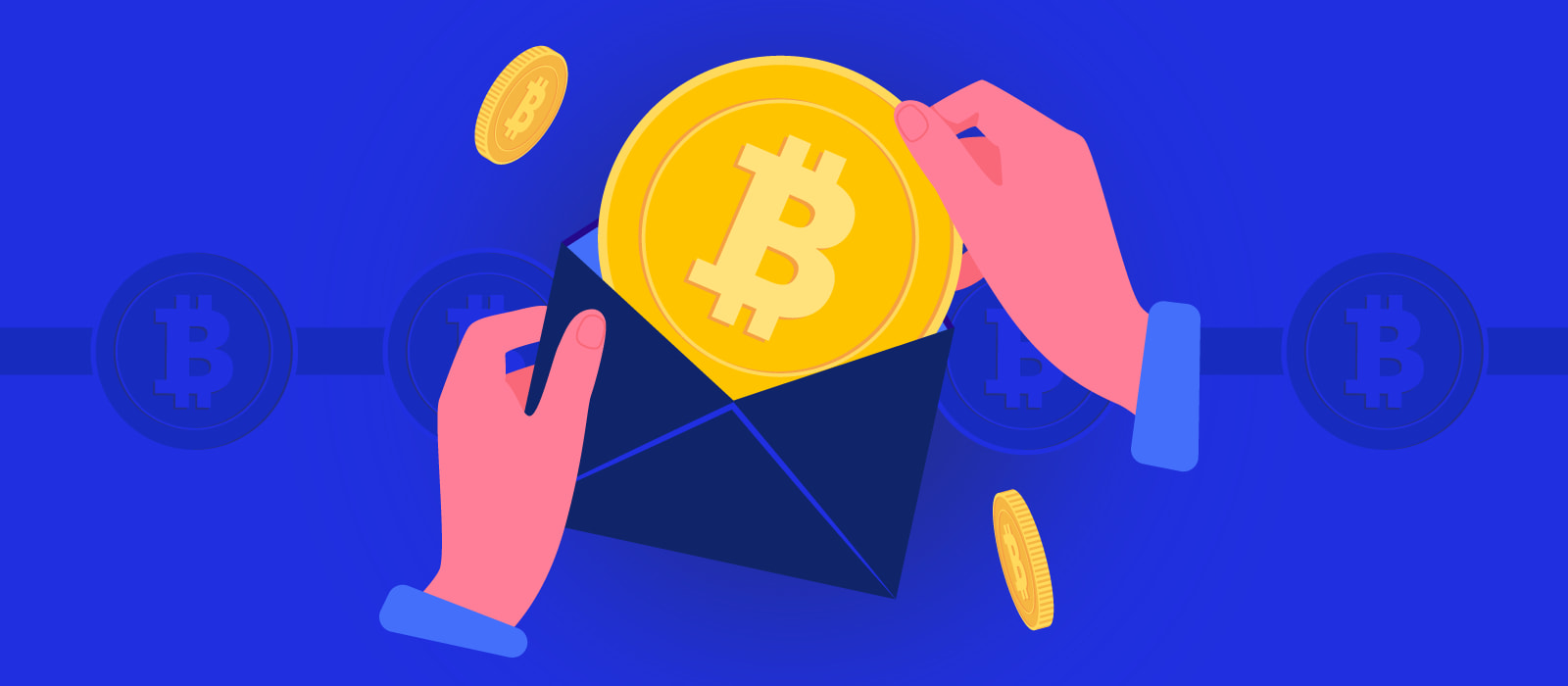Interoperability has been one of the key issues preventing widespread blockchain adoption. Now there’s an efficient new solution to this problem – wrapped crypto.
Every crypto enthusiast, entrepreneur, or cryptocurrency holder has dreamed of holding and enjoying the benefits of different tokens at the same time. But this used to be impossible because every token ran on a blockchain with conditions that limited interoperability with other tokens. And then, wrapped tokens came along to address these limitations.
So what are these wrapped tokens, and how do they work? Stay with our BSC smart contract development team experts to discover the working principles of wrapped tokens and how they solve the interoperability problem, their key opportunities, use cases, and prospects, as well as the most popular wrapped tokens and their alternatives.
What is a wrapped token?
A wrapped token is a unique cryptocurrency whose value is tied to the value of another currency. Essentially, cryptocurrency owners can use wrapped tokens to trade on another cryptocurrency’s blockchain. To do so, the owner simply needs to “wrap” their tokens instead of selling them.
By using wrapped tokens owners are able to preserve their original assets by securing them in a special digital vault. Once fixed, the original asset becomes inaccessible to the owner as long as the wrapped token remains in circulation.
The user can still retrieve their original assets, but this requires a special notice that will take the wrapped token out of circulation — and destroy it. Once this is done, the original crypto asset will be removed from storage and returned to its owner.
How do wrapped tokens work?
![]()
To better understand the working principles behind wrapped tokens, let’s first explore the key user roles in the process.
- Traders – institutions or individuals for whom custodian banks mint or withdraw wrapped tokens. They play a crucial role in the distribution of wrapped tokens.
- Vendors – keep some wrapped tokens as a buffer to exchange with other users.
- Users – own wrapped tokens and can transfer them. The same rules apply here for sharing ERC-20 tokens in the Ethereum ecosystem. The user sends a request to the dealer, who then performs the necessary KYC procedures and authenticates the user — this is called an atomic swap.
- DAOs (decentralized autonomous organizations) – enter into a funding round as soon as the framework conditions are established. All custodians and dealers are DAOs.
Now that we’ve established the roles, let’s discuss how wrapped tokens work. The entire process works as follows:
- 1. A merchant sends the coin to the custodian to mint.
- 2. The custodian then generates a burn request, which authorizes the release of the requested token from the reserves.
- 3. Each custodian gets a key enabling them to mint new wrapped tokens and then remove coins from the outstanding inventory.
- 4. Custodians exchange assets for wrapped tokens with traders either by minting new tokens or by delivering (or removing) existing tokens.
- 5. Custodians are expected to have a wallet for each trader from which they can send packaged tokens to sellers whitelisted on the blockchain.
Wrapped crypto as a solution to the interoperability issue
Interoperability is the ability of different blockchains to exchange value without any restrictions. This issue has been a real headache in the crypto world, which wrapped cryptocurrencies are now trying to resolve.
Let’s use the Ethereum network to explore the interoperability concept.
The first wrapped crypto was developed for Ether, the native currency of Ethereum. This wrapped token came into existence before the emergence of the ERC-20 standard, rendering it incompatible with other ERC-20 tokens.
As a result, wrapped Ether (wETH) was created within the ERC-20 framework to allow Ether users to interact with other ERC-20 tokens. This approach encapsulates Ethereum’s decentralized finance (DeFi) movement.
In essence, you can trade wrapped cryptocurrencies even on non-native platforms. So if you have wrapped Ether, you can swap it for wrapped Bitcoin on any verified third-party exchange.
Such flexible trading opportunities represent the natural evolution of modern crypto assets, with wrapped tokens helping preserve the dynamic value of crypto.
Wrapped Bitcoin: meaning, opportunities, goals, and prospects
Now let’s explore opportunities, goals, and prospects of popular wrapped tokens. One of the most popular examples is wrapped Bitcoin.
Interested in crypto trading? Then check out this sophisticated cross-border trading bot
What is wrapped Bitcoin?
The wrapped Bitcoin token (wBTC) is popular due to its attachment to the equally famous Bitcoin. wBTC is the first coin backed fully by Bitcoin (BTC) reserves. The organizations behind wBTC wanted to create a system that would solve the currency’s liquidity problems.
When the wrapped Bitcoin project first started in January 2019, 72.4214 wBTC was created and put into circulation. However, market analysts believe that the creators of wBTC are reneging on their promise to provide low volatility, which is evident when you compare Bitcoin vs. wrapped Bitcoin.
The need for wBTCs emerged due to the somewhat obsolete performance of core Bitcoin technology, which manifested itself in a confirmation time of as much as 10 minutes per transaction.
Wrapped wBTC removes these slow transaction times, reduces fees, and increases confirmation speeds. This opens new crypto profit horizons for all wBTC holders; for instance, users can lend wBTC via smart contract development services and get a particular loan percentage at a fixed interest rate every year.
Wrapped Bitcoin — current state and market value
wBTC can be used directly in dApps such as Compound, Dharma, or Gnosis, thanks to the standardization of the ERC-20 format. In this way, developers can combine the best of both worlds: the liquidity and acceptance of Bitcoin and the decentralized and proven Ethereum ecosystem.
In addition, Coinmarketcap has indicated that wrapped Bitcoin’s exchange rate fluctuates between 0.996 BTC and 1.009 BTC, thus reinforcing wBTC’s status as a so-called stablecoin.
At the time of publication, wrapped Bitcoin is trading on Kyber Network, IDEX, and AirSwap. Although other projects are similar, wBTC still has the highest growth rate at the moment.
It’s important to know that the team behind wBTC enforces anti-money laundering (AML) laws and Know Your Customer (KYC) guidelines, which makes regular trading a taxing affair.
Interested parties must send the order to authorized dealers, who in turn contact Bitgo, currently the only custodian bank. Bitgo then mints the requested ERC-20 tokens on behalf of the seller in exchange for the number of Bitcoins used.
Wrapped Bitcoin — valuable prospects
In the long term, developers plan to create additional use cases that will be implemented as the ecosystem grows. wBTC could be used, for example, for decentralized loans and derivatives markets.
For the organizations behind the project, full transparency is paramount. To this end, the project is audited by independent bodies every three months, and its stability and security are monitored. This also applies to the deposits of BTC which maintain and stabilize wBTC at a 1:1 ratio.
Meet Arbitrage Bot – a crypto trading bot for one end user
Wrapped Ether: underlying mechanics and possibilities
Wrapped Ether, or wETH, is an ERC-20 compliant token which can be used for assets originally based on the Ethereum blockchain. wETH is Ethereum’s native 1:1 cryptocurrency and increases the functionality of the Ethereum ecosystem.
Decentralized applications often need to be converted from ETH to wETH to work properly. wETH is created by sending ETH to a smart contract. The wrapped Ether can then be sent back to the same smart contract to be burned or deployed.
Since Ethereum itself is incompatible with the ERC-20 token, Ether cannot be exchanged for other ERC-20 tokens in a decentralized way without the need for an intermediary. But this contradicts the basic idea of decentralization.
Instead of implementing two interfaces (one for Ether and one for ERC-20 tokens) in one smart contract, adding unnecessary complexity, the developers decided to package Ether to upgrade it to the ERC-20 standard.
With wETH, direct and decentralized peer-to-peer trading between ETH and ERC-20 tokens can be carried out under one technical standard. Wrapped Ether enables direct and seamless exchange between Ether and ERC-20 tokens without the need for a trusted third party and unnecessary risk of error due to complex implementations.
Available wrapped crypto alternatives
![]()
Although Ethereum and Bitcoin are market leaders, several other similar projects are popular on the market. For example, Ren — an innovative Ethereum-based token protocol focused on seamless crypto exchange across blockchains — already supports all existing crypto-assets and their wrapped versions.
Here are some examples:
- Bitcoin Cash (BCH): renBCH
- Zcash (ZEC): renZEC
- Filecoin (FIL): renFIL
- Dogecoin (DOGE): renDOGE
- DigiByte (DGB): renDGB
- Terra (LUNA): renLUNA
Another popular blockchain that allows users to wrap their tokens is Binance Smart Chain. With Binance Bridge, you can wrap your crypto assets and trade them in yield farming applications. But you still need to pay gas fees, albeit to a lesser degree, when using BSC.
Here are the most popular cryptocurrencies and their equivalents that have been wrapped on Binance:
- XRP (XRP): wrapped XRP (bXRP)
- Tether (USDT): USDT (TUSD) wrapped by Binance
- Bitcoin Cash (BCH): Binance wrapped BCH (bBCH)
- Polkadot (DOT): DOT (bDOT) wrapped by Binance.
Other popular wrapped tokens include wrapped Filecoin (wFIL), wrapped Zcash (wZEC), wrapped Monero (wXMR), wrapped BNB (wBNB) and wrapped NXM (wNXM).
Why use wrapped tokens?
Wrapped tokens unveil new possibilities and open promising crypto asset management horizons to explore in place of some of the good old crypto practices that are going obsolete.
When it comes to Bitcoin, for instance, wrapped crypto principles boost transactional capacity by going beyond the previously mentioned limitations of Bitcoin.
Coindesk estimates that wBTC accounts for 80% of tokens wrapped onto Ethereum, which is around 1.3% of Bitcoin’s supply. These figures show that users are gradually buying into wrapped tokens.
Wrapped tokens also boost the liquidity of resources on decentralized exchanges. For instance, you can wrap your unused assets to use on other blockchains while keeping them linked to the original environment.
All in all, going for wrapped crypto assets is a great way of optimizing and balancing out the liquidity of all your token types without cross-blockchain trading limitations.
Spend a few minutes reading this article to learn more about DeFi and its impact on the financial world
What are the current risks of using wrapped crypto?
Most trust-based platforms pose security risks. For example, a PeckShield tweet reported that the BadgerDAO hack led to the loss of 2100 BTC, which was valued at 118 million USD at the time.
Here are several other risks and disadvantages:
- The reliability of vendors is currently unproven.
- Many wrapped tokens depend on the provider platform, which prevents decentralization.
- The coining process is expensive.
- Conversion usually takes place through a central program, so there is a high risk of manipulation.
- The use of wrapped tokens in inter-network transactions is only possible through trusted parties such as custodian banks or dealers.
Conclusion
Wrapped cryptocurrencies provide the opportunity to move your assets between blockchain environments without worrying about interoperability issues. They are part of the constant evolution of the crypto world as we continue to explore application and development opportunities for this revolutionary technology. So if you want to move your BTC to ETH, or vice-versa, convert them to wrapped tokens to save time and fees.
Stay tuned for more tech and market insights that will help you grow in line with the newest trends and best practices. Or, if you are considering developing your own crypto trading solution or similar project, contact our blockchain development company and we will come up with the most suitable solution.




